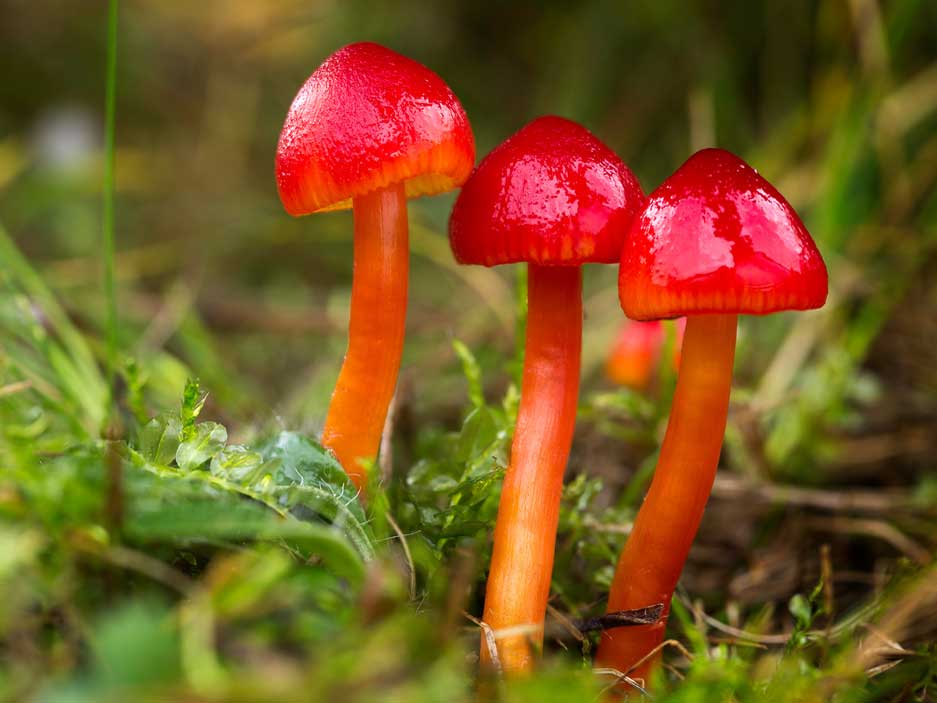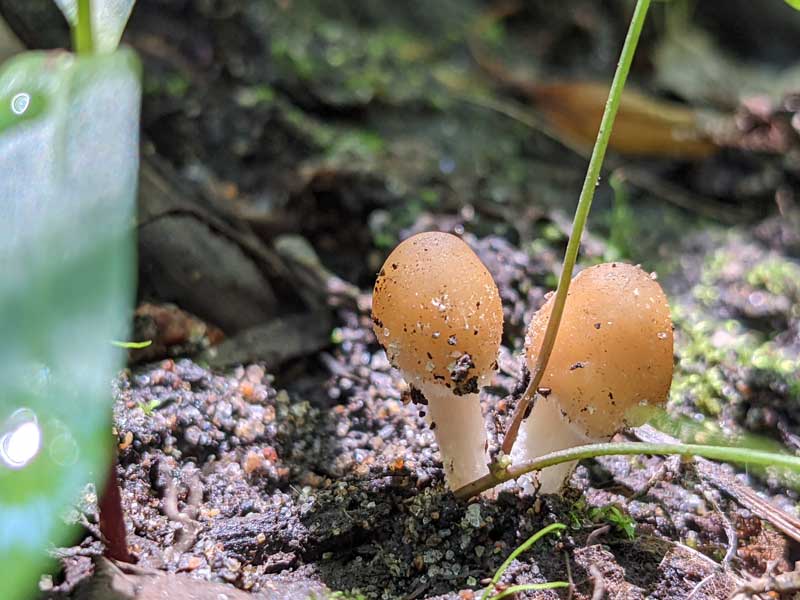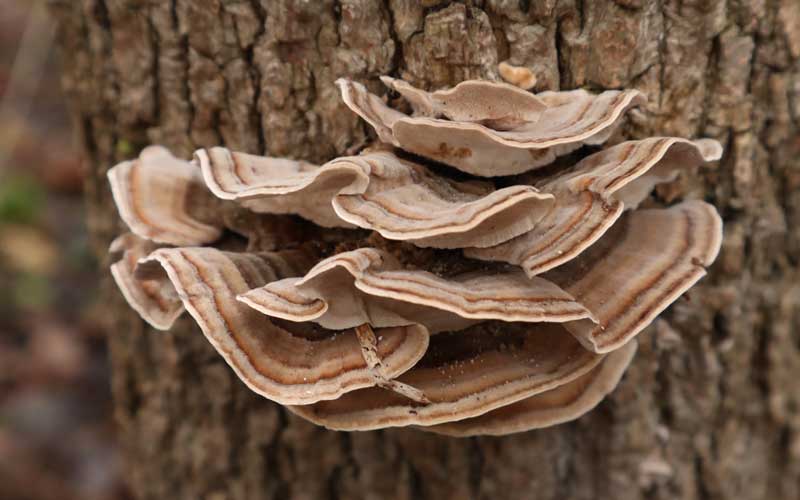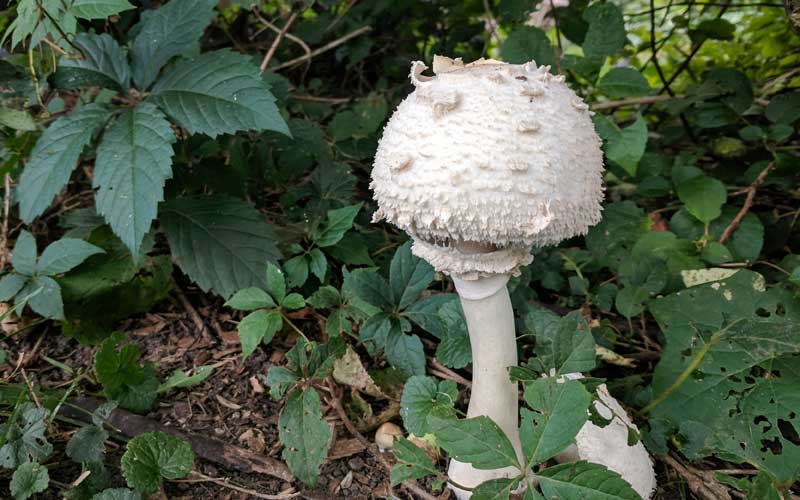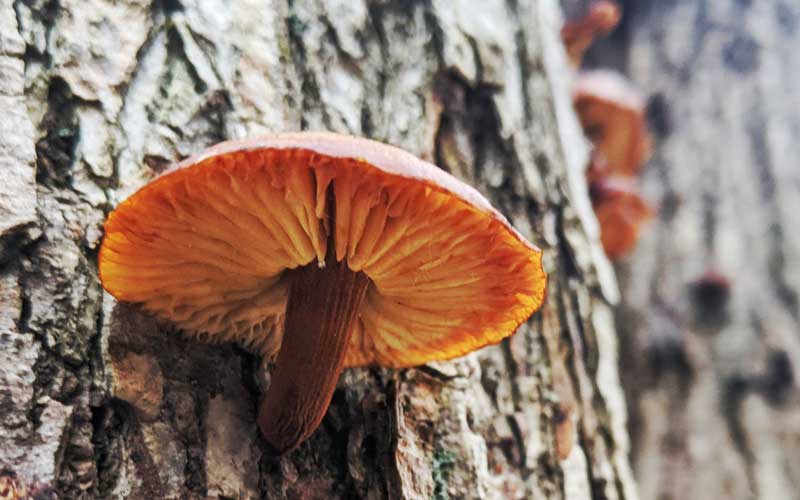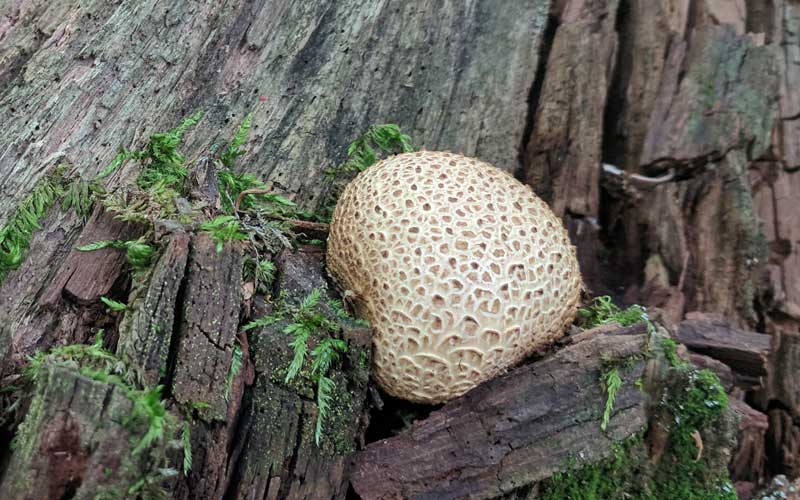- Home
- Mycelium Intro
- Cicada Fungi
How a fungal parasite manipulates Cicadas for its own reproductive needs.
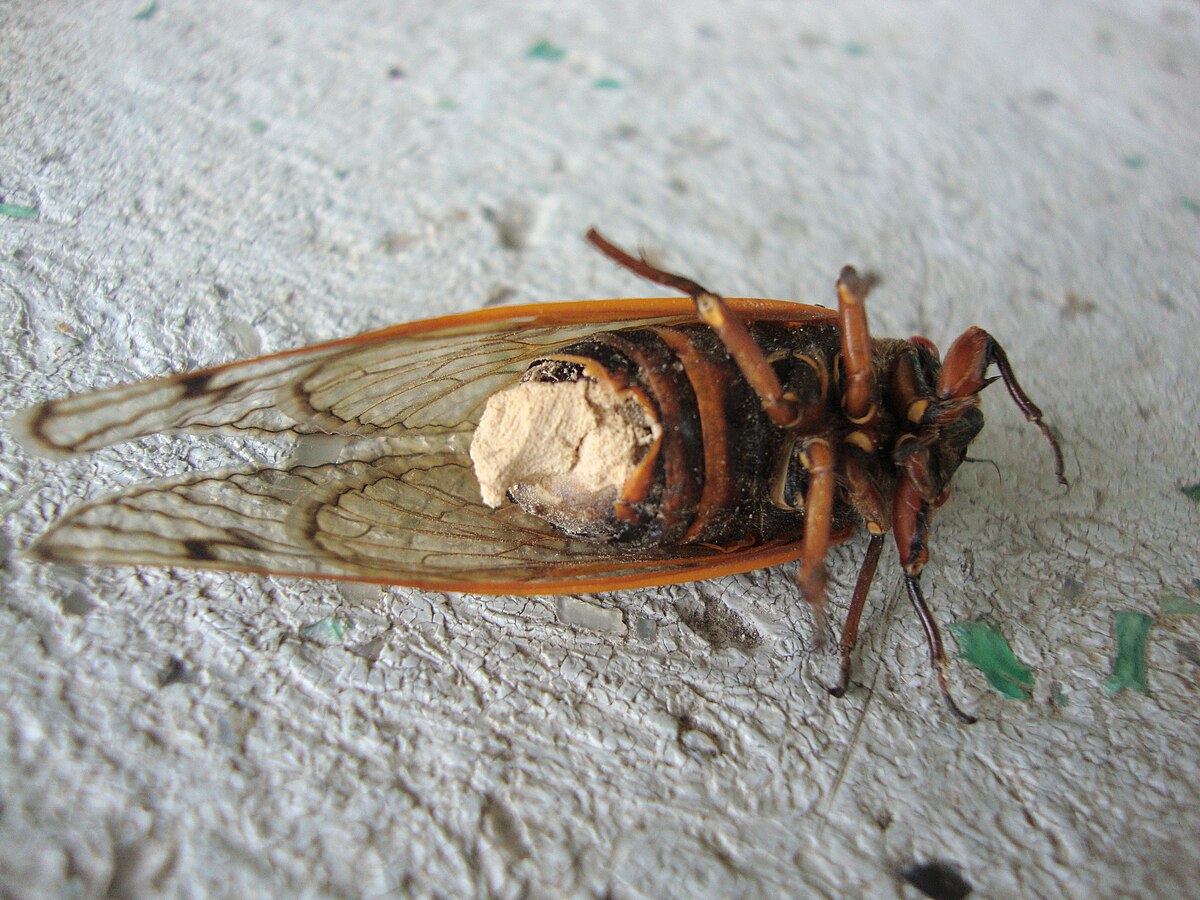 TelosCricket, CC BY-SA 4.0, via Wikimedia Commons
TelosCricket, CC BY-SA 4.0, via Wikimedia CommonsCicadas are known for their buzzing chorus that fills the air during the warm months, and this year we’re looking at billions of them rising from the ground and taking flight.
While they're already pretty intriguing insects, Cicadas also have a peculiar relationship with a fungal parasite known as Massospora cicadina. This parasitic fungus infects cicadas during certain brood cycles, creating a unique and somewhat gruesome spectacle in the natural world.
When a cicada becomes infected with Massospora cicadina, it undergoes a series of strange and disturbing transformations. The fungus first invades the cicada's body, feeding on its tissues and growing rapidly. As the fungus spreads throughout the cicada's body, it starts to manipulate the insect's behavior in bizarre ways.
That’s right… Cicada Zombies!
One of the most notable effects of Massospora cicadina infection is the alteration of the cicada's mating behavior. Infected male cicadas have been observed mimicking the mating calls of female cicadas, luring unsuspecting healthy males close to them. When a healthy male approaches, the infected male attempts to mate with it, unknowingly spreading the fungal spores in the process.
Aside from manipulating the cicada's behavior, the fungus also causes physical changes in the insect. Infected cicadas often lose their abdomen or parts of their body as the fungus continues to grow and consume their tissues.
In some cases, the fungal infection is so severe that the cicada's entire rear end is replaced by a mass of spores, ready to be released and spread to other cicadas.
Despite the grisly nature of this fungal infection, Massospora cicadina plays a crucial role in cicada populations. By targeting these insects, the fungus helps to control cicada populations and prevent outbreaks that could damage forests and vegetation.
Studying the relationship between cicadas and Massospora cicadina not only provides insights into the complexities of nature but also highlights the intricate web of interactions that exist between species, and within ecosystems.
As researchers continue to unravel the mysteries of this bizarre symbiotic relationship, there is no doubt that the cicada fungus will continue to amaze and surprise us with its weird and slightly creepy ways.
Related Topics:
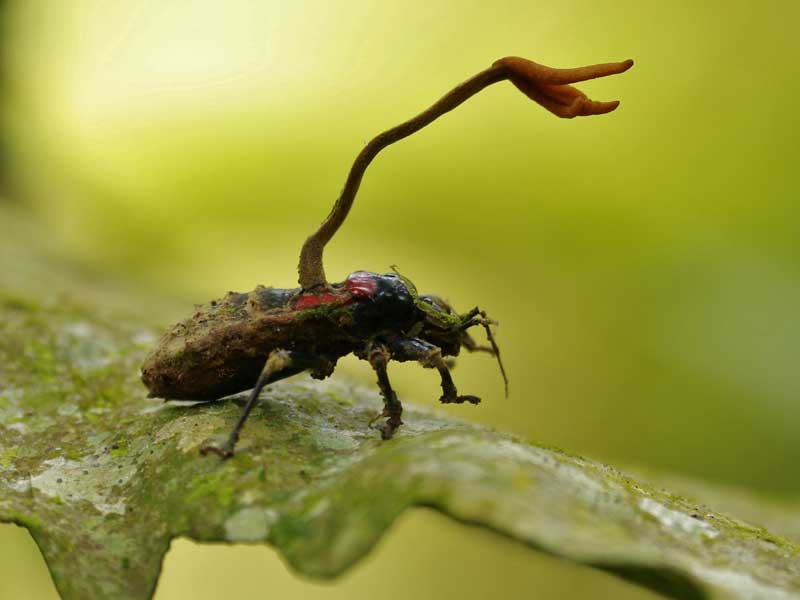
6 Incredible things about fungi and mushrooms you probably don’t know.
From zombie fungi to mycelium coffins and more, mushrooms and fungi never fail to stretch and test our imaginations. Read the full article...
4 Ways mushroom mycelium challenges our definitions of intelligence.
As humans we like to believe only our species is intelligent. Research into fungal mycelium is now challenging that assumption. Read the full article...
